Public Relations Capstone Students Help Homeless Veterans Soldier On
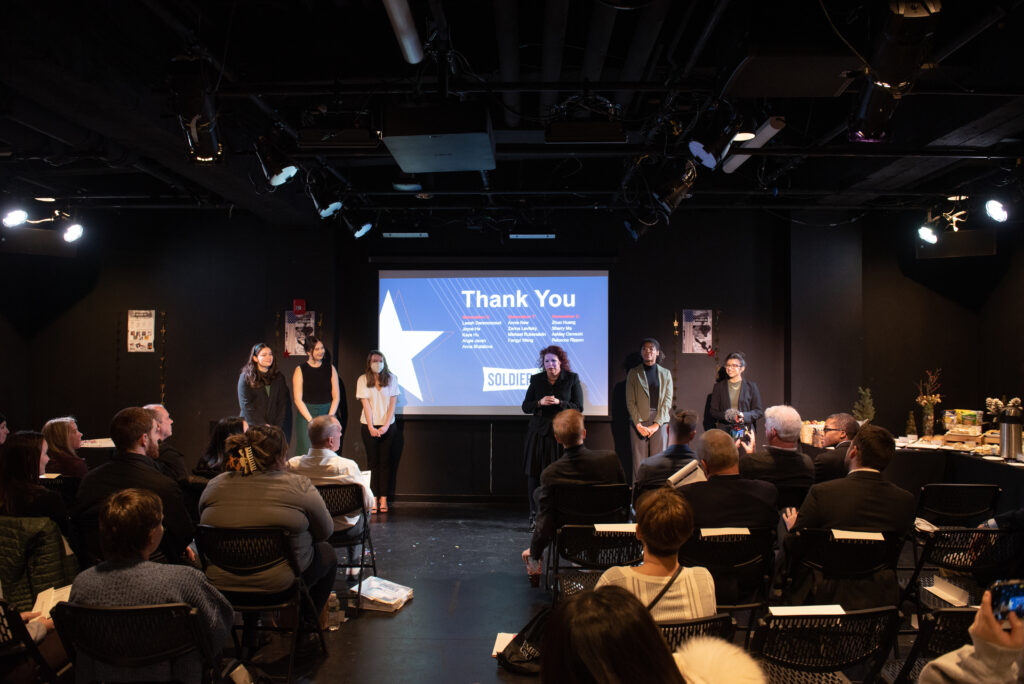
Written by Emerson Today Correspondent Melissa Russell
In some college public relations programs, students gain expertise by studying celebrated case studies, such as the Tylenol poisoning crisis of 1982 or the development of the iPhone. Others have students write fake press releases for imaginary clients.
That’s not how it works at Emerson.
Students in Emerson’s Public Relations program learn by doing. By the time seniors get to the major’s capstone course, they’re prepared to create a full campaign for a real nonprofit organization—a rigorous process that gives the client an action plan to boost awareness, and the students an opportunity to hone and demonstrate their skills for future employers.
At the end of last semester, students in Assistant Professor Maria Scott’s Campaigns course held their capstone presentation. This was the culmination of a full year’s work, which was to create a public relations campaign for Soldier On, a non-profit organization that addresses homelessness among military veterans. Military brass as well as Emerson leadership were on hand as the students laid out a multi-pronged plan to boost Soldier On’s profile.
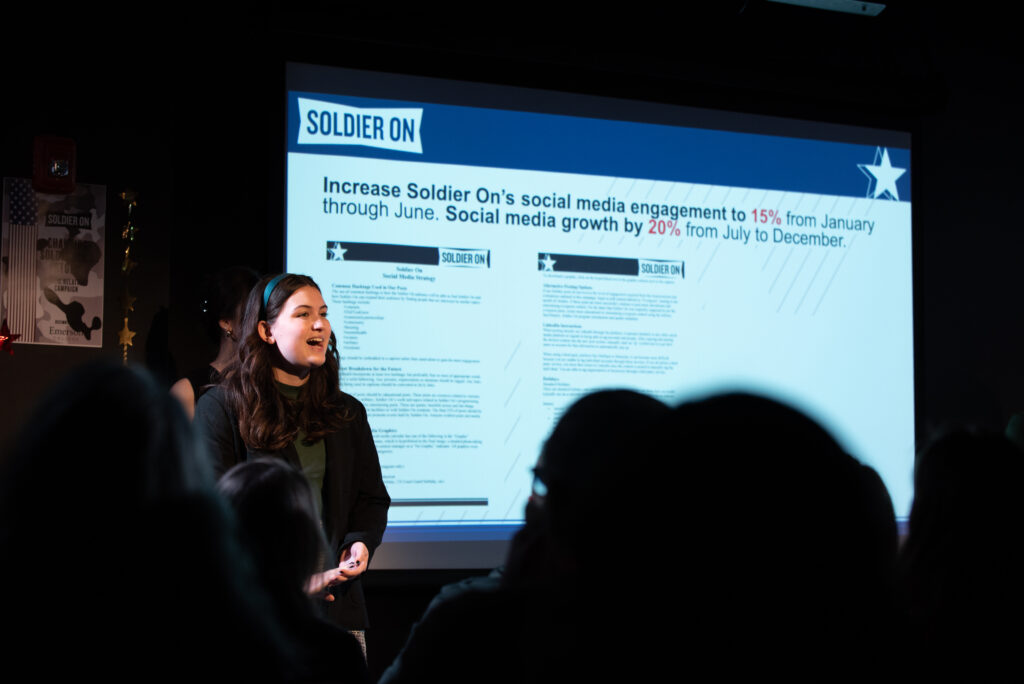
The capstone project exemplifies Emerson’s mission of supporting civic engagement – with students learning how to be professionals while also doing good works, said Scott, director of Emerson’s Public Relations program.
“Emerson has a strong history of supporting civic engagement and this project is a great example of how civic engagement via service-learning benefits both the organization and the students. Service learning is a wonderful way for students to get the opportunity to work with a real client, by producing a professional-level PR campaign.”
Related: Nonprofit Comm Students Help Shrine Shine
Scott, a public relations and journalism professional, brought the program to Emerson five years ago, after developing it at the University of Miami.
“I felt it revolutionized what students were learning,” she said. “When I got to Emerson, I told Greg (Payne, associate professor and chair of the School of Communications) I needed a lot of leeway to make this happen; this is not the model that other schools use.”

Since Scott needed that first year at Emerson to build the program, this year’s senior cohort is the first to fully experience it according to her design.
“It was very exciting for me to see the people go through the entire program, just as it was set up,” Scott said. “I really got to know them, and it was very exciting to see their progression.”
Scott chose Soldier On after a rigorous selection process.
She explained to CEO Bruce Buckley, and Casey DiCicco, director of communications, how they would have weekly homework, as assigned by the students, and would be asked to attend regular meetings throughout the school year.
“When I tell the client they are getting $25,000 worth of work for free, and we’re only asking for their time in return, most are happy about it,” she said.
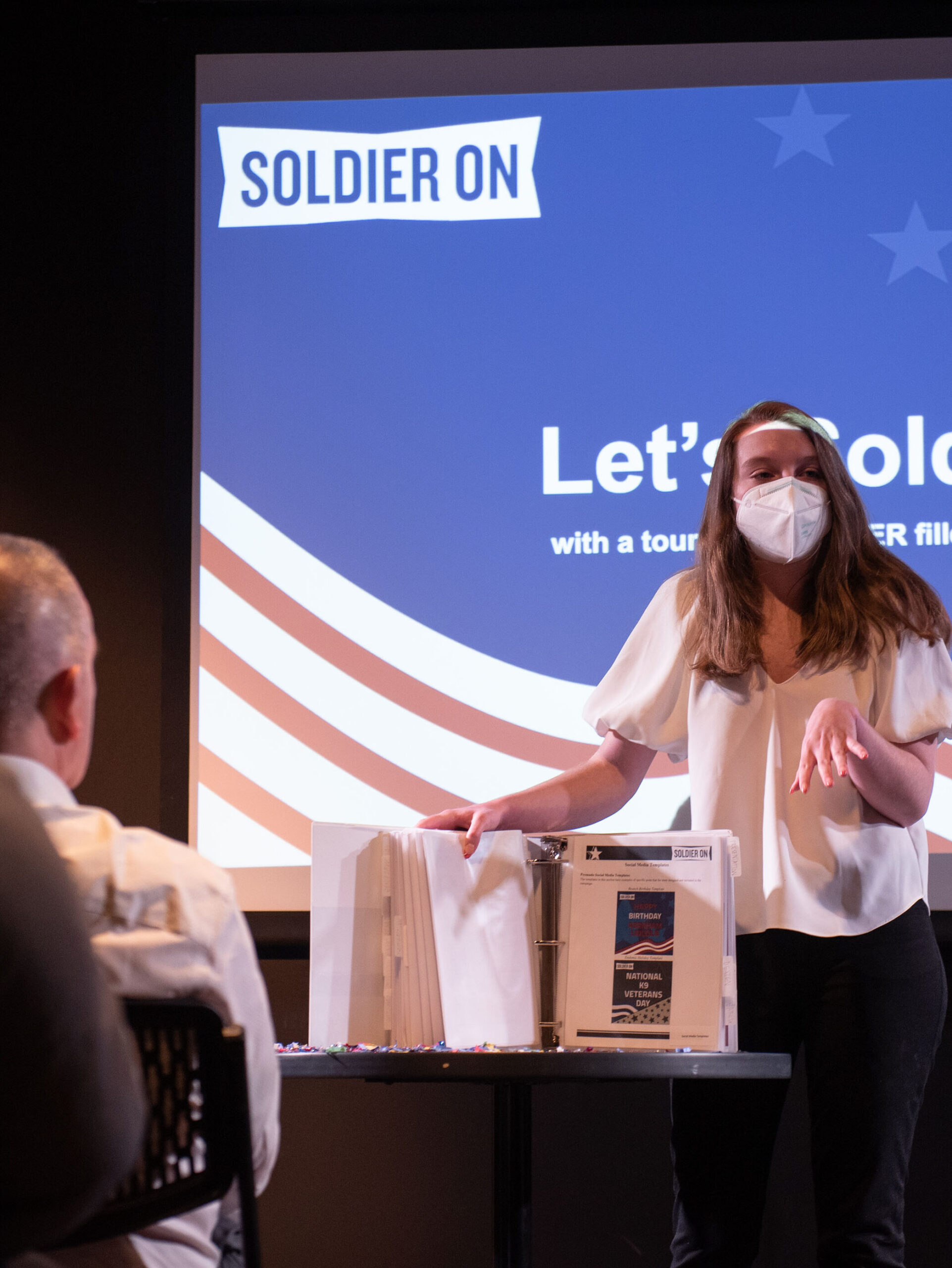
At the first meeting, Buckley and DiCicco presented all their current marketing materials to the 13 students involved in the project.
“We’re focused on serving veterans, so marketing isn’t always our strong suit, I’m willing to admit,” DiCicco said. “We were excited to work with the class, and were on board right away. We gave Maria everything and anything we had from previous pieces. They dissected it, and it was all very impressive.”
Then the students started digging for information on veterans and homelessness, veterans services, and for information on the target audiences.
“The students are incredible digital investigators,” Scott said. “They’ll dig up more in two days than I’ll dig up in a week.”
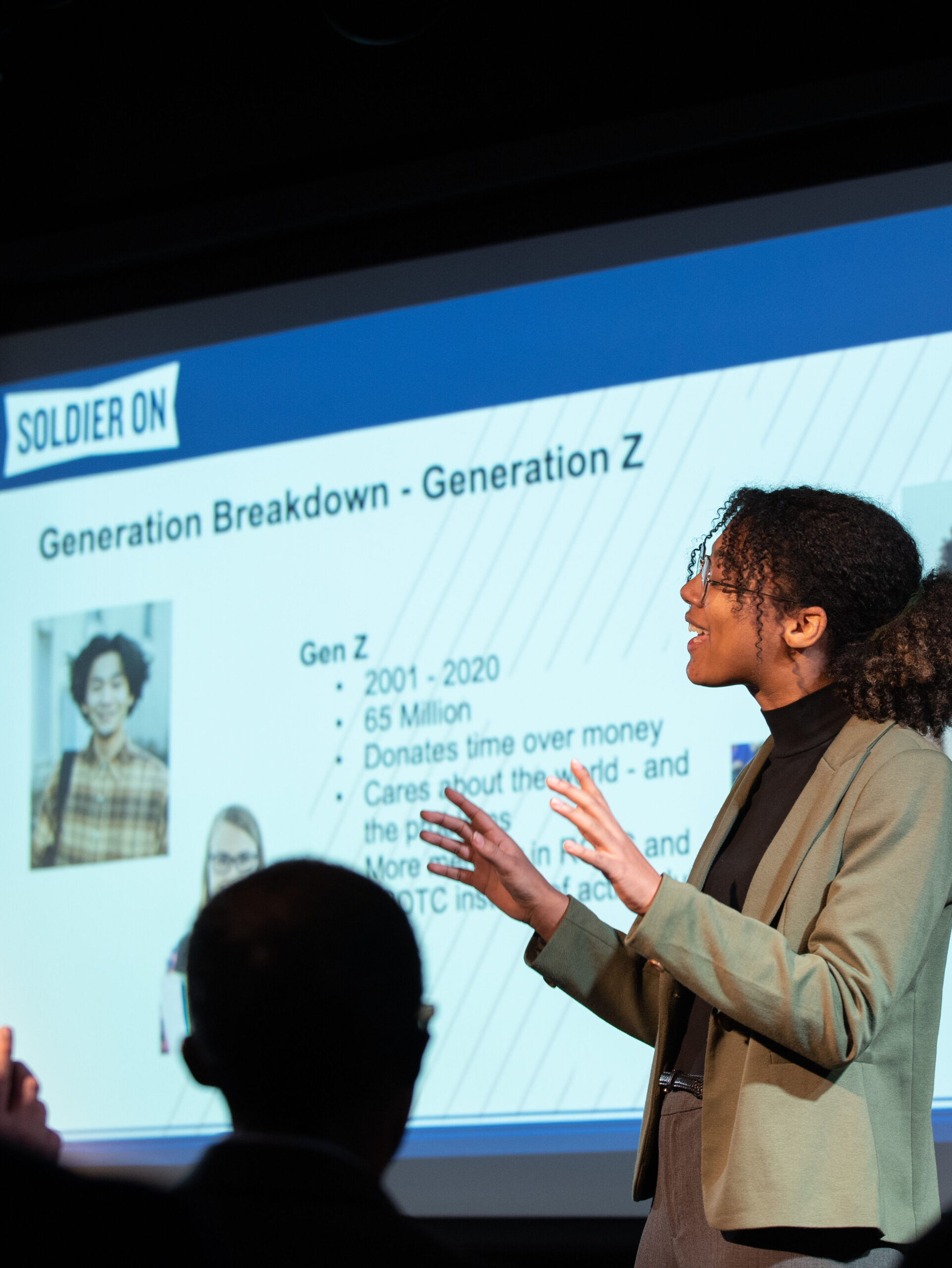
Through background analysis, surveys, and reams of secondary research, the students identified the target audience’s lack of awareness of all of Soldier On’s services as the main problem to address.
The students then analyzed the charitable giving habits of Generations X-Z, (spanning the birth years 1965-2012) as well as their relationship to the military. As a result of their research, they created a year-long plan for increasing social media engagement with 1,000 posts targeted to every platform. They focused on strengthening media coverage and creating volunteer opportunities for high school students. The class created and held awareness-building events, and planned out more for the Soldier On team to undertake on their own.
Throughout the process, students learned what was possible and what was overreaching, Scott said.
“My role was like that of a marriage counselor,” she said. “Everyone brings ideas and I’m the voice of reason – ‘that’s cool but impractical. Let’s talk it through.’”
DiCicco and Buckley were impressed with the students’ passion and skills.
“They were very professional. They took what we gave them and what they extracted in the three-to-four-month period was something real and tangible. They exceeded our high expectations,” Buckley said.
Annie Kew ’22—who graduated just a few weeks after the capstone presentation—said the focus on practical skills in her PR coursework impressed the Boston Celtics organization, where she served an internship last year.
“This prepared me for post-graduation better than any program I could have been in,” she said. “It really did put you in the seat of an actual, working professional. That class, and all the other classes with Dr. Scott really prepared me, and made sure I’m confident enough to execute on deliverables.”
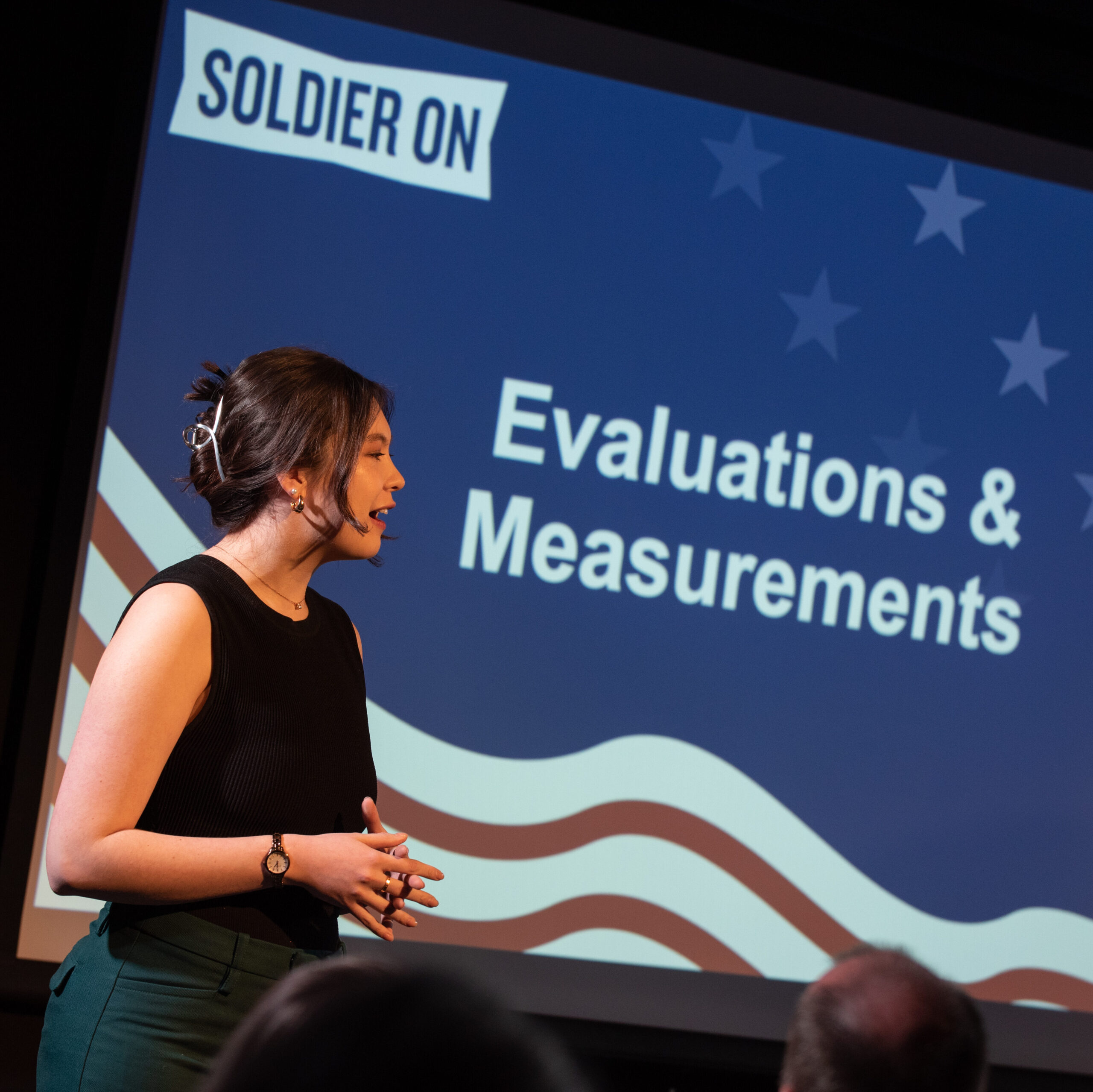
Recent graduate Rebecca Rippin ’22 called the capstone project “an amazing experience to put skills to use.”
“I’m extremely grateful. Direct professional opportunities are very hard to come by, and I don’t think I’d have that if I went anywhere else,” she said. “I think the ability to do so many projects in an actual professional setting, rather than just getting a grade or ticking a box, to know my work was making an impact even before I had graduated, that was an incredible experience I’ll always take with me.”
On presentation day—when the students presented Buckley and DiCicco with a massive binder that housed research summaries, survey results, goals statements, style guides, timelines for press releases, media lists, branding elements, event outlines and the social media calendar filled out for the coming year, and even ideas for souvenir merchandise — they were greeted with applause.
DiCicco called the work “impressive,” and said the organization had already begun using the social media plan.
Buckley added, “I work with a lot of young people. I think they get a bad rap today. They are all lumped into one thing that isn’t accurate or representative of my experience. I’m optimistic. When I go to places like Emerson, I see something very positive and exciting for the future.”
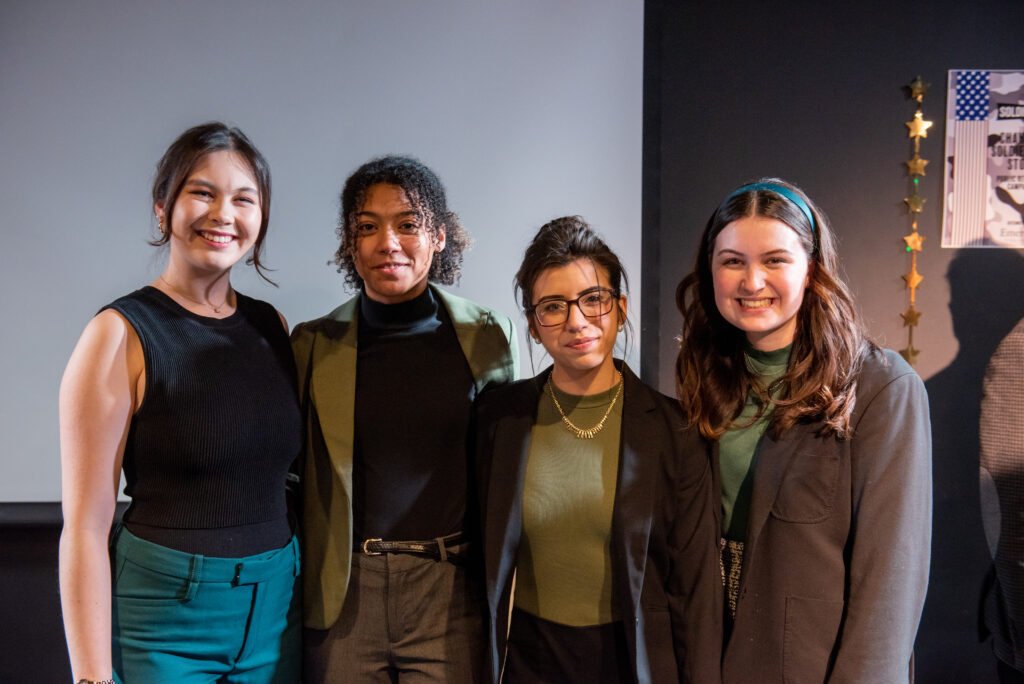
Categories